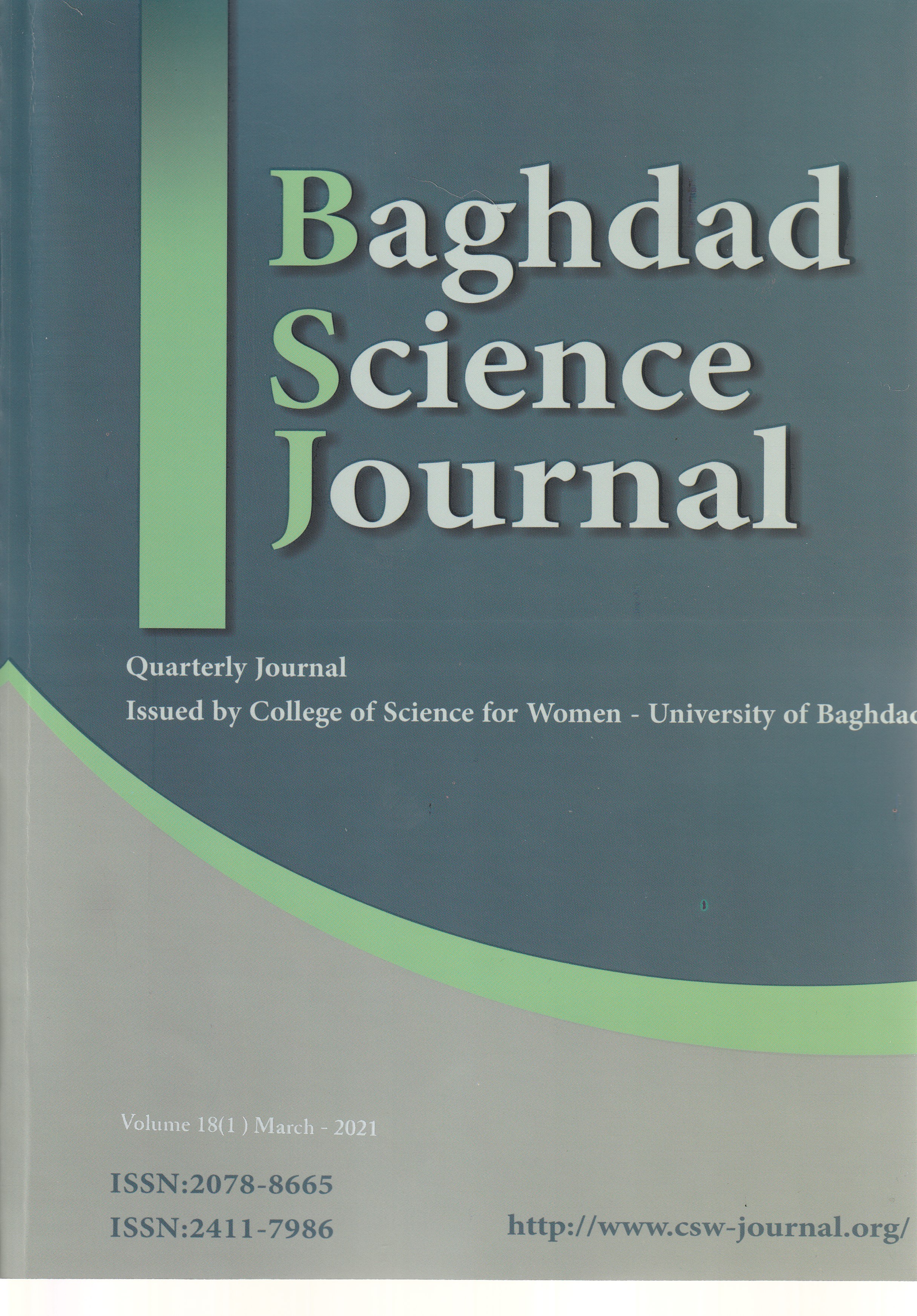تحسين إداء المسطحات المائية الصناعية المدمجة مع الخلية المايكروبية لتوليد الطاقة الكهربائية بإستخدام أقطاب من الفولاذ المقاوم للصدأ
محتوى المقالة الرئيسي
الملخص
ركزت هذه الدراسة على إداء المسطحات المائية الصناعية المدمجة مع خلية الوقود المايكروبية في معالجة المياه الملوثة وتوليد الطاقة الكهربائية. في هذه الدراسة تم استخدام نوعين من الاقطاب; الفولاذ المقاوم للصدأ و كَرافيت. تم تنظيم الاقطاب الكهربائية في ثلاثة مجاميع. في التنظيم الأول القطبين الموجب والسالب كانا عبارة عن صفيحة من الكَرافيت، في التنظيم الثاني القطب السالب كان عبارة عن صفيحة مشبكة من الفولاذ المقاوم للصدأ أما القطب الموجب فكان عبارة عن صفيحتين من الفولاذ المقاوم للصدأ. أما في التنظيم الثالث فالقطب السالب كان عبارة عن صفيحة مشبكة من الفولاذ المقاوم للصدأ في حين القطب الموجب كان عبارة عن صفيحة من الكَرافيت. ان أعلى طاقة تم الحصول عليها هي (9 Mw/m3) كانت من التنظيم الثالث. بعد مرور 10 أيام من بدء التشغيل، كانت افضل نسبة لإزالة المتطلب الكيمائي للأوكسجين (COD) كانت 70% وقد تم الحصول عليها من التنظيم الثاني. إن تأثير درجة الحرارة قد تمت دراسته ايضاً، حيث تم إختبار توليد الطاقة الكهربائية من التنظيم الثالث في درجات حرارة 30،35 و40 درجة مئوية وإن أفضل نتيجة ((80 Ma/m3 كانت في درجة حرارة 40 درجة مئوية. في هذه الأنظمة الثلاثة تم السماح للطحالب بالنمو حتى تزود هذه الأنظمة بالأوكسجين اللازم لعملية الاختزال.
تفاصيل المقالة

هذا العمل مرخص بموجب Creative Commons Attribution 4.0 International License.
كيفية الاقتباس
المراجع
Parkash A. Microbial fuel cells: a source of bioenergy. J Microb Biochem Technol. 2016; 8: 247–255.
Rismani-Yazdi H, Carver S M, Christy A D, Tuovinen O H. Cathodic limitations in microbial fuel cells: an overview. J Power Sources. 2008; 180: 683–694.
Santoro C, Arbizzani C, Erable B, Ieropoulos I. Microbial fuel cells: from fundamentals to applications. A review. J Power Sources. 2017; 356: 225-244.
Wang H, Luo H, Fallgren P H, Jin S, Ren Z J. Bioelectrochemical system platform for sustainable environmental remediation and energy generation. Biotechnol Adv. 2015; 33:317–34.
Li Y, Wu Y, Liu B, Luan H, Vadas T, Guo W, et al. Self-sustained reduction of multiple metals in a microbial fuel cell–microbial electrolysis cell hybrid system. Bioresour Technol. 2015; 192:238–46.
Dong Y, Feng Y, Qu Y, Du Y, Zhou X, Liu J. A combined system of microbial fuel cell and intermittently aerated biological filter for energy self-sufficient wastewater treatment. Sci Rep. 2015; 5:18070.
Myung J, Yang W, Saikaly P, Logan B E. Copper current collectors reduce long-term fouling of air cathodes in microbial fuel cells. Environ Sci: Water Res Technol. 2018; 4:513–9.
Boets P, Michels E, Meers E, Lock K, Tack M G, Goethals P L M. Integrated constructed wetlands (ICW): ecological development in constructed wetlands for manure treatment. Wetlands. 2011; 31: 763-771.
Luo H, Jenking J, Ren Z. Concurrent desalination and hydrogen generation using microbial electrolysis and desalination cells. Environ. Sci. Technol. 2011; 45: 340-344.
Jung S, Regan J M. Comparison of anode bacterial communities and performance in microbial fuel cells with different electron donors. Appl Microbiol Biotechnol. 2007; 77: 393-402.
Logan B, Rabaey K. Conversion of Wastes into Bioelectricity and Chemicals by Using Microbial Electrochemical Technologies. Science. 2012; 337: 686-690.
Mehdinia A, Ziaei E, Jabbari A. Facile microwave-assisted synthesized reduced rapheme oxide/tin oxide nanocomposite and using as anode material of microbial fuel cell to improve power generation. Int J Hydrogen Energy. 2014; 39:10724–30.
Kumar G G, Hashmi S, Karthikeyan C, GhavamiNejad A, Vatankhah- Varnoosfaderani M, Stadler F J. Graphene oxide/carbon nanotube composite hydrogels-versatile materials for microbial fuel cell applications. Macromol Rapid Commun. 2014; 35:1861-1865.
Srivastava P, Yadav A K, Mishra B K. The effects of microbial fuel cell integration into constructed wetland on the performance of constructed wetland. Bioresour Technol. 2015; 195: 223-230.
Oon Y, Ong S, Ho L, Won Y, Dahalan F A, Oon Y, et al. Synergistic effect of up-flow constructed wetland and microbial fuel cell for simultaneous wastewater treatment and energy recovery. Bioresour Technol 2016; 203: 190-197.
Tang C, Zhao Y, Kang C, Yang Y, Morgan D, Xu L. Towards concurrent pollutants removal and high energy harvesting in a pilot-scale CW-MFC: Insight into the cathode conditions and electrodes connection. Chem. Eng. J. 2019; 373: 150-160.
Wang X, Tian Y, Liu H, Zhao X, Peng S. Optimizing the performance of organics and nutrient removal in constructed wetland- microbial fuel cell systems. Sci. Total Environ. 2019; 653: 860-871.
Mohammed A K, Ali S A, Ali I F. Using locally Isolated Chlorella vulgaris in Wastewater Treatment. Eng. &Tech. Journal. 2016; 34(4), Part (A): 762-768.
Reddy C N, Kakarla R, Min B. Algal Biocathodes. 2019; 525-547.
Song H, Zhang S, Long X, Yang X, Li H, Xiang W. Optimization of bioelectricity generation in constructed wetland-coupled microbial fuel cell systems. Water Journal. 2017; 9(185):1-13.
Khater D, El-khatib K M, Hazaa M, Hassan R Y A. Activated Sludge-based Microbial Fuel Cell for Bio-electricity Generation. Bas. & Environ. Sci. 2015; 2: 63-73.
Pocaznoi D, Calmet A, Etcheverry L, Erable B, Bergel A. Stainless steel is a promising electrode material for anodes of microbial fuel cells. Energy Environ. Sci. 2012; 5(11): 9645-9652.
Firas Khaled. Contribution to electrical valorization of microbial fuel cells, PhD thesis, L’Institut National des Sciences Appliquées de Lyon. 2016.
Del Campo G, Lobato J, Cañizares P, Rodrigo M, Fernandez M F. Short-term effects of temperature and COD in a microbial fuel cell. Appl. Energy. 2013; 101: 213–217.
Martin E, Savadogo O, Guiot S R, Tartakovsky B. The influence of operational conditions on the performance of a microbial fuel cell seeded with mesophilic anaerobic sludge. Biochem. Eng. J. 2010; 51(3): 132–139.
Li M, Zhou M, Tian X, Tan C, McDaniel T C, Hassett D J, et al. Microbial fuel cell (MFC) power performance improvement through enhanced microbial electrogenicity. Biotechnol. Adv. 2018; 36: 1316-1327.




